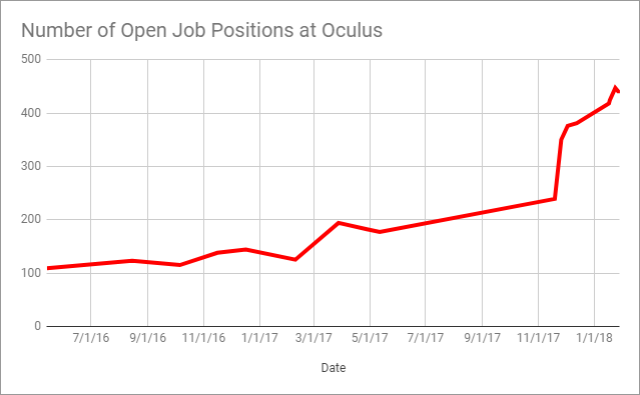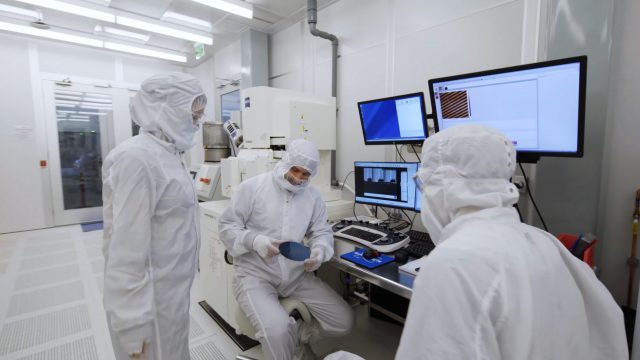Starting toward the end of 2017, the number of listed job openings at Oculus has nearly tripled, with the current number of openings floating around an all time high.
Across Oculus’ 15 locations, the company is currently listing 443 available openings, spanning 20 categories from Research to Software Engineering to Computer Vision, and more. The number of openings has spiked significantly since November, data collected from the last 20 months by Road to VR shows.

The spike comes at the end of 2017 and into the New Year. While that might coincide with annual budget planning, job openings at the company during the 2016 to 2017 transition didn’t show anything comparable to what’s been seen from Oculus’ hiring since November 2017.
A spokesperson for Oculus tells Road to VR, “Overall, the growing number of job openings across AR and VR are an indication of the level of commitment that Facebook/Oculus is making in the VR space.”
Corresponding with the company’s hiring spree, a promotional recruiting video was released last week extolling the benefits of working in the Oculus Research department, which currently has a record high 80 job openings:
Back in 2014, shortly after Facebook’s acquisition of Oculus and the formation of Oculus Research, the company’s chief scientist, Michael Abrash, called it the “first complete, well funded VR research team in close to 20 years.” In early 2017, Facebook CEO Mark Zuckerberg publicly toured the Oculus Research facility and shared an inside look.

Earlier this month Facebook announced that it was a founding partner of the University of Washington’s Reality Lab. Based in Seattle, home of Oculus Research, the $6 million venture “creates one of the world’s first academic centers dedicated to virtual and augmented reality,” Facebook says.
With some 60 internship, co-op, and PHD student openings, it’s clear that Oculus hopes to take advantage of the Reality Lab as an incubator for future AR/VR research talent.







